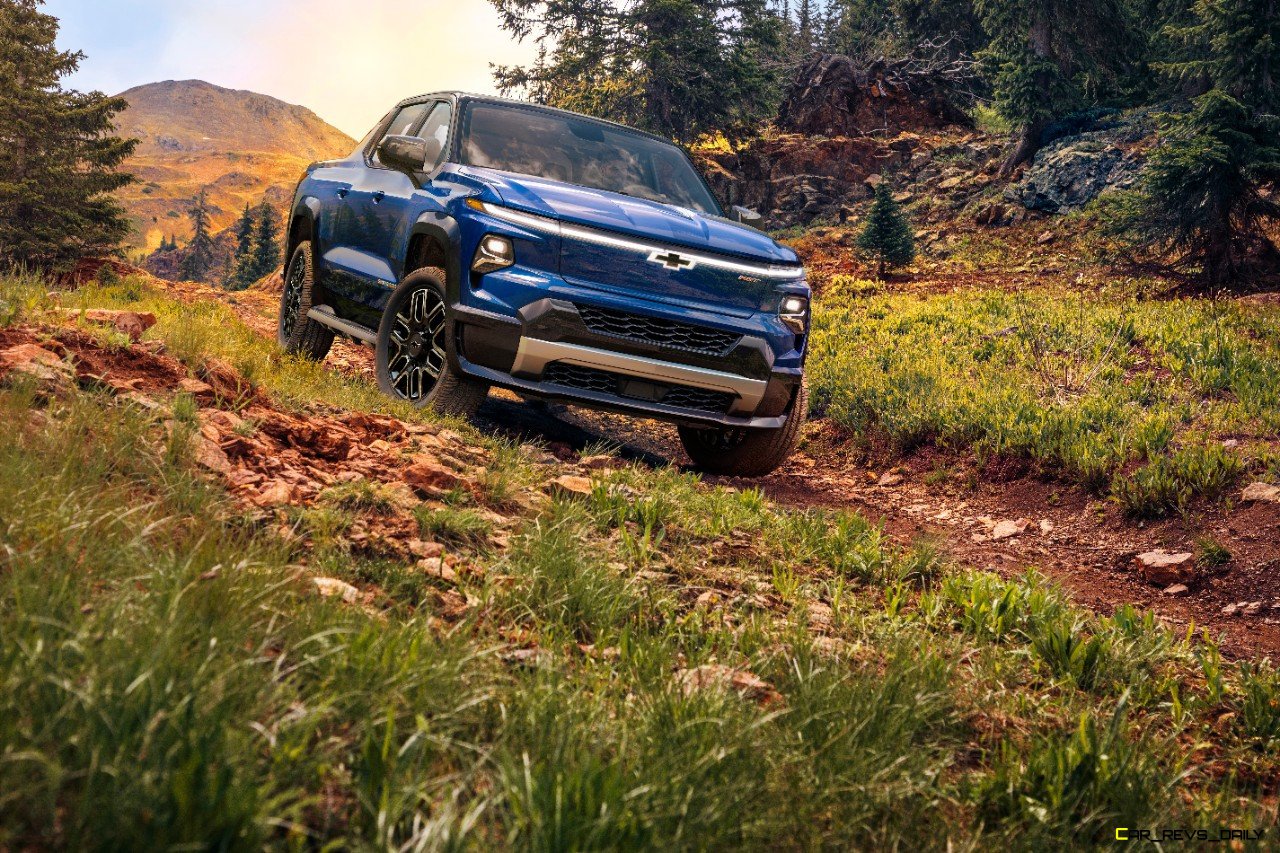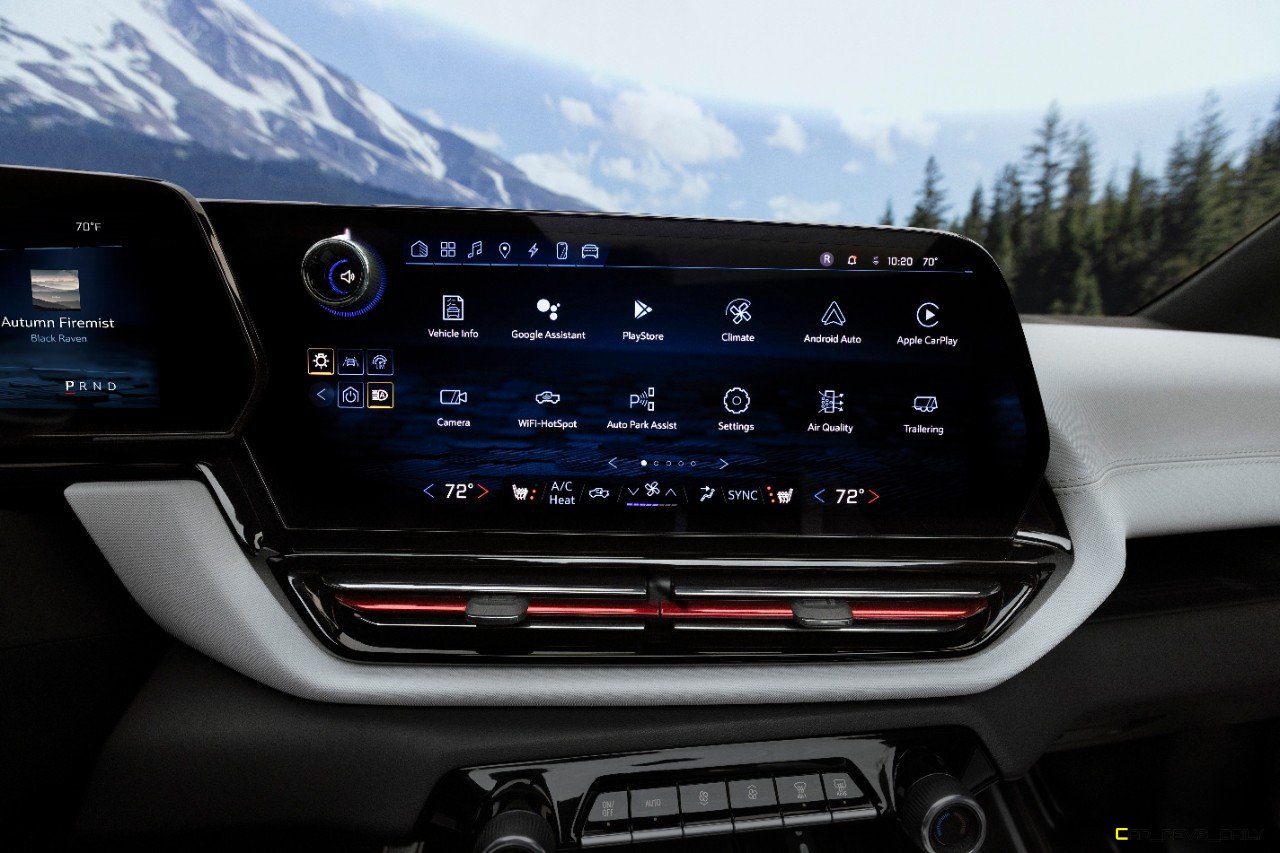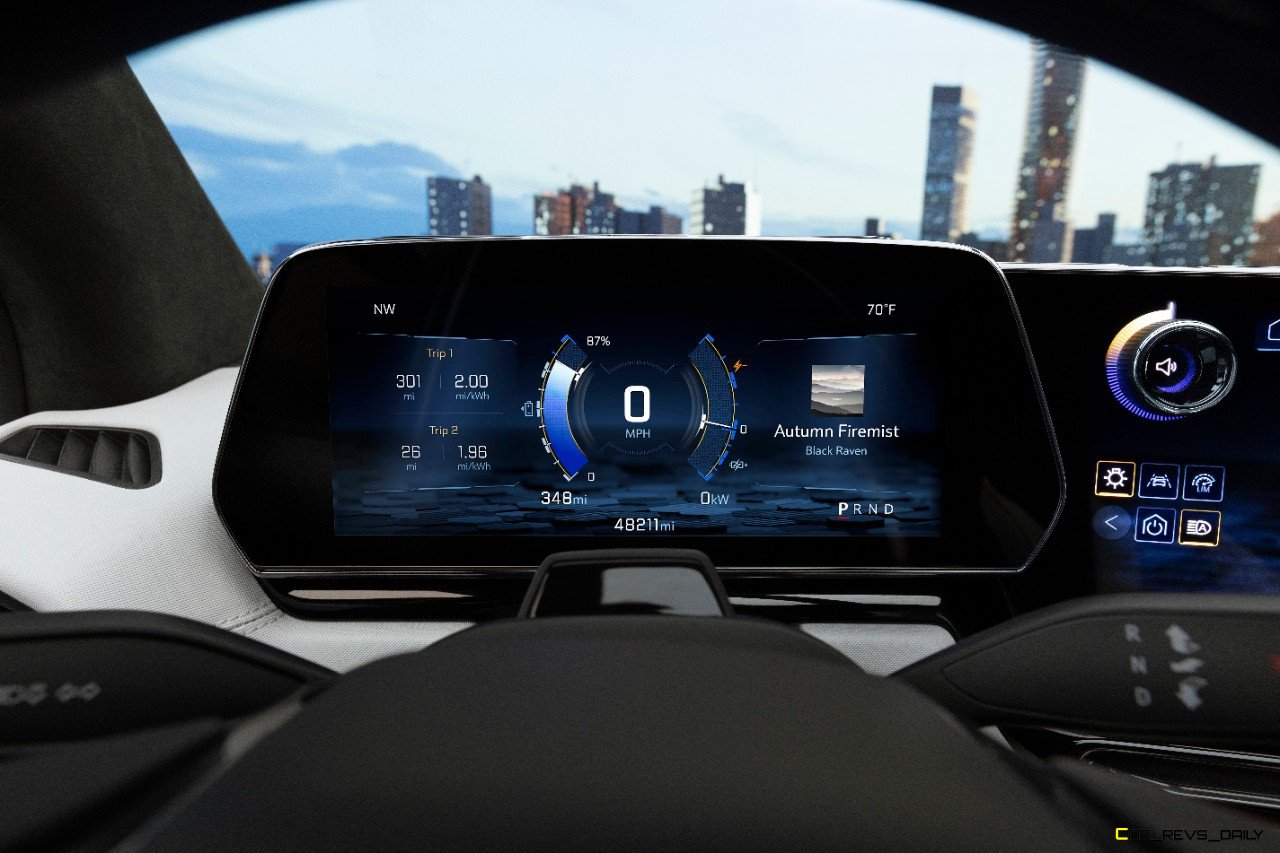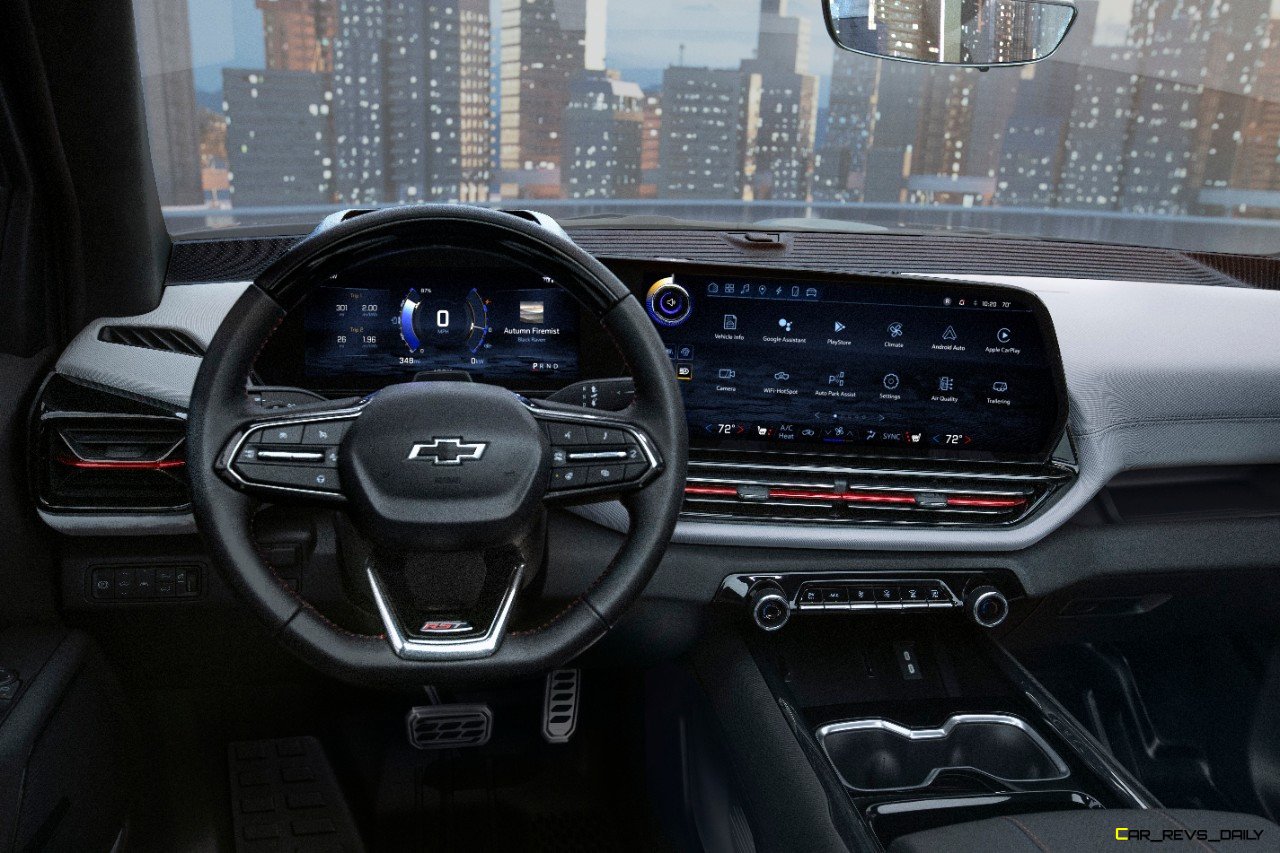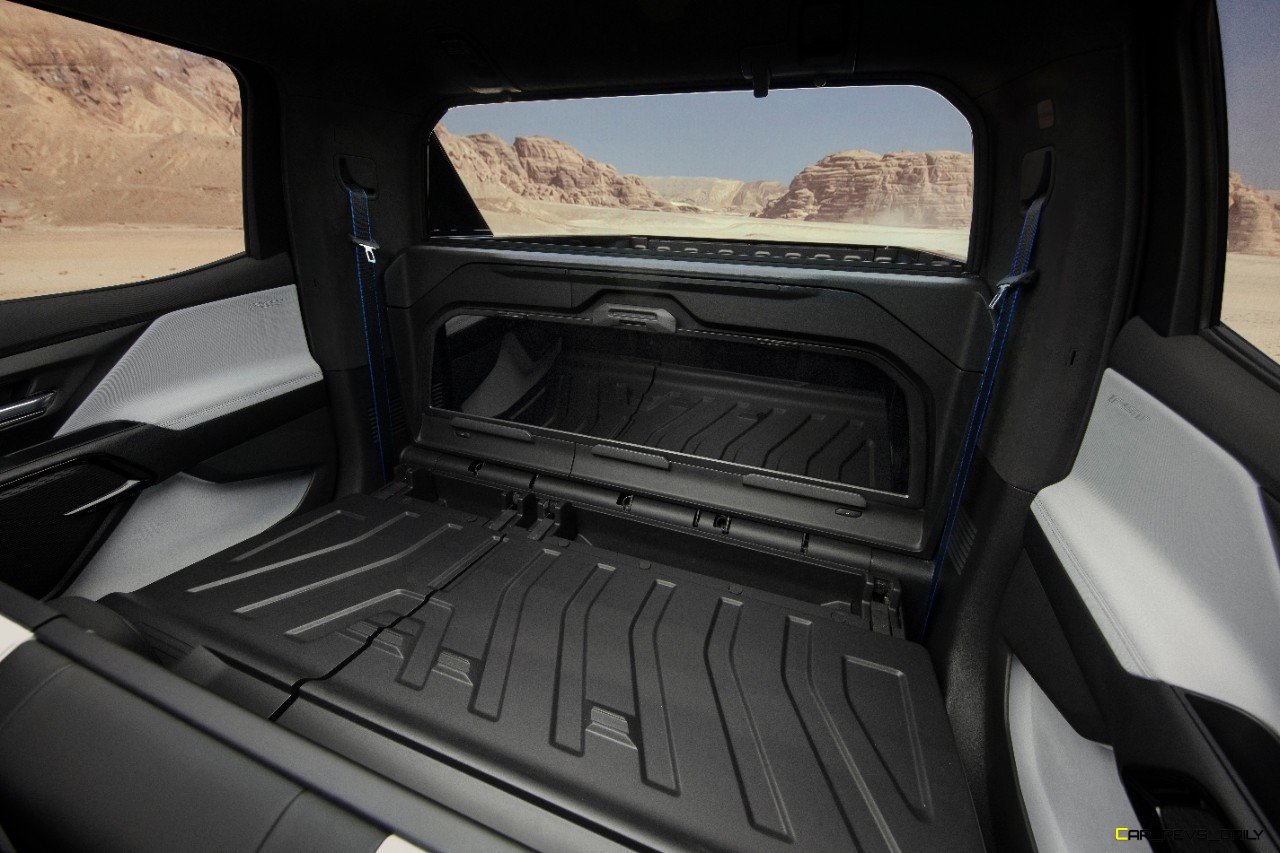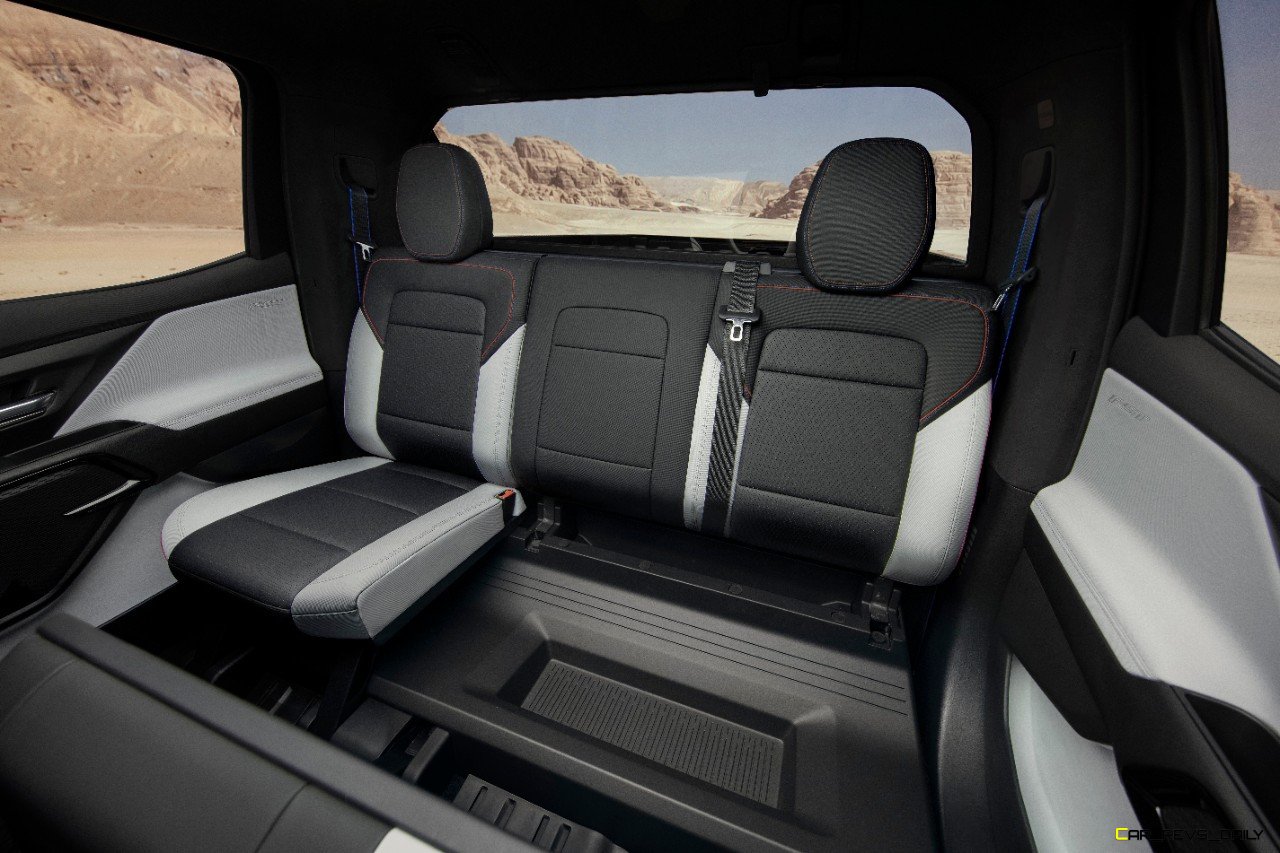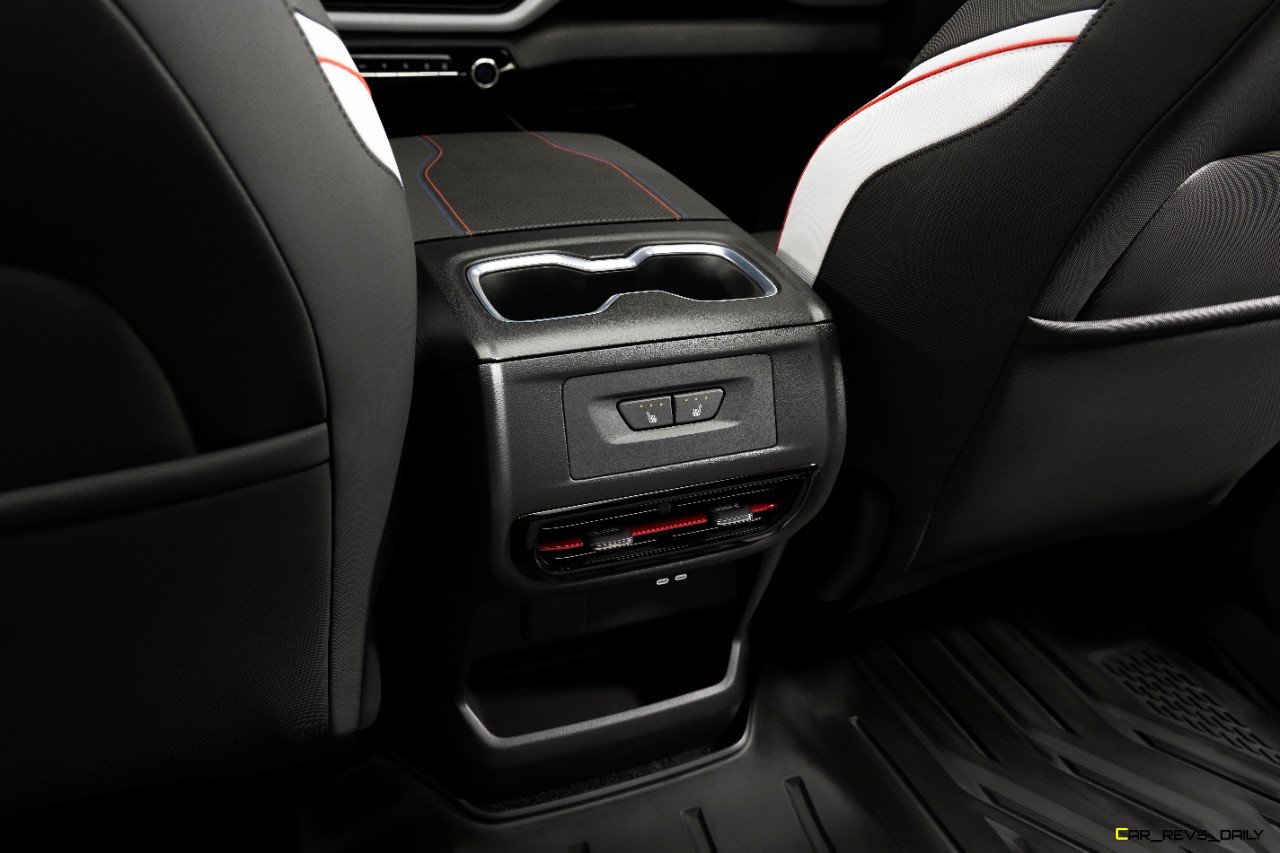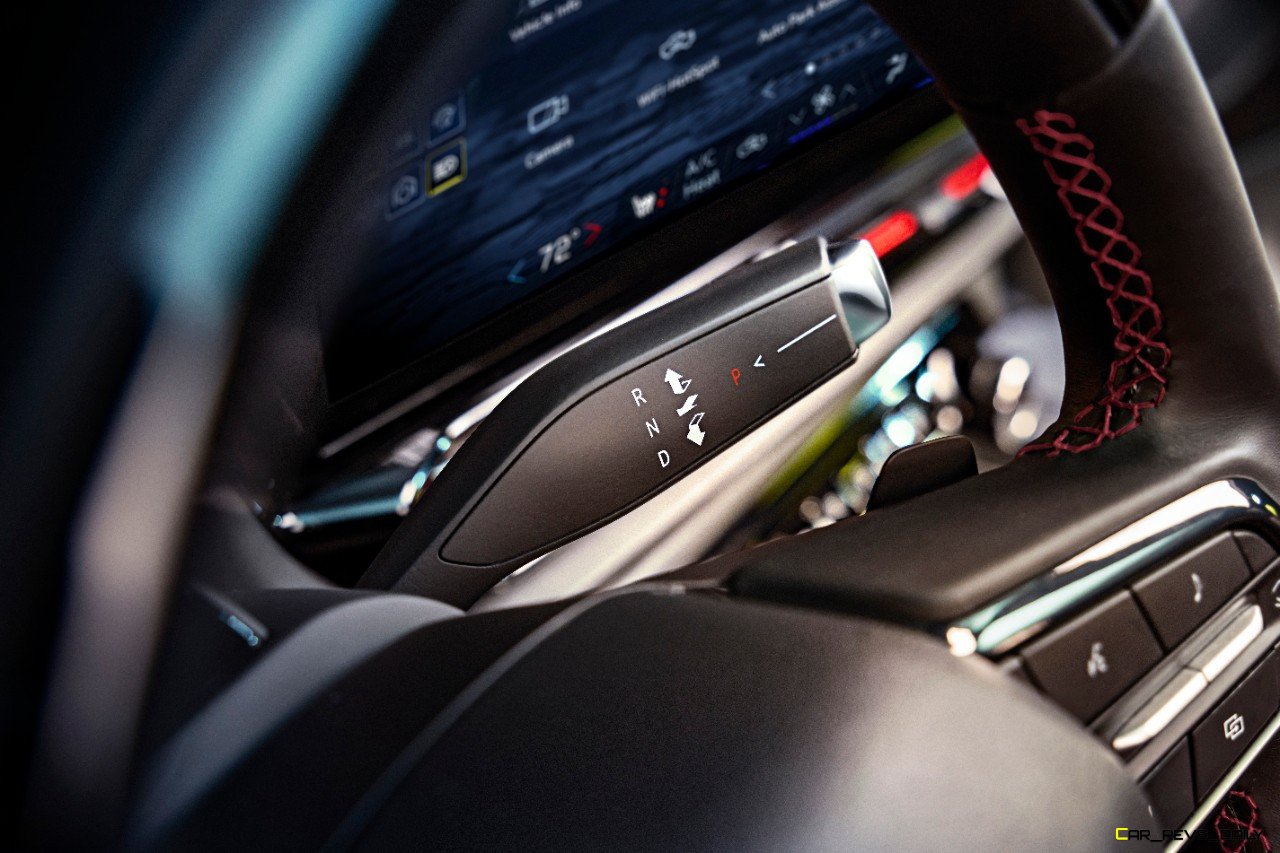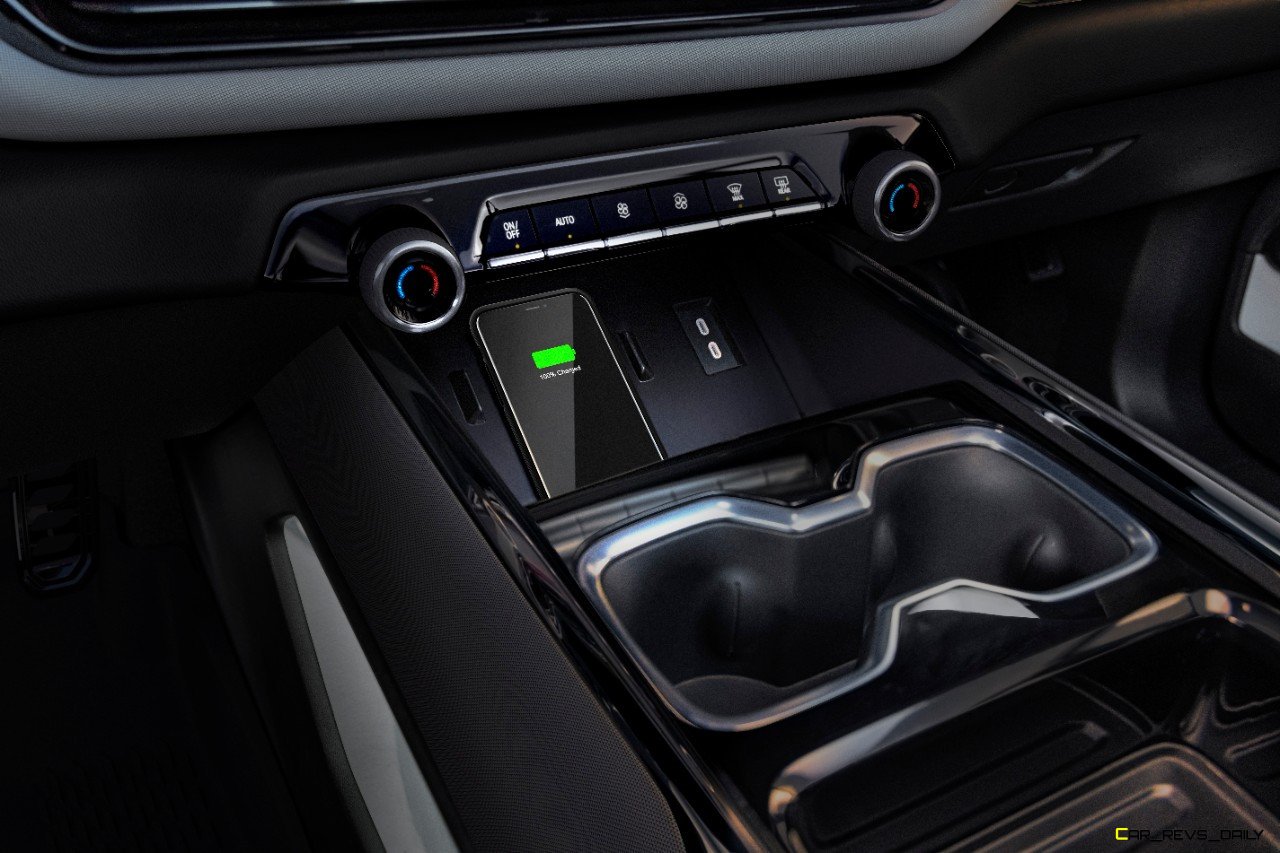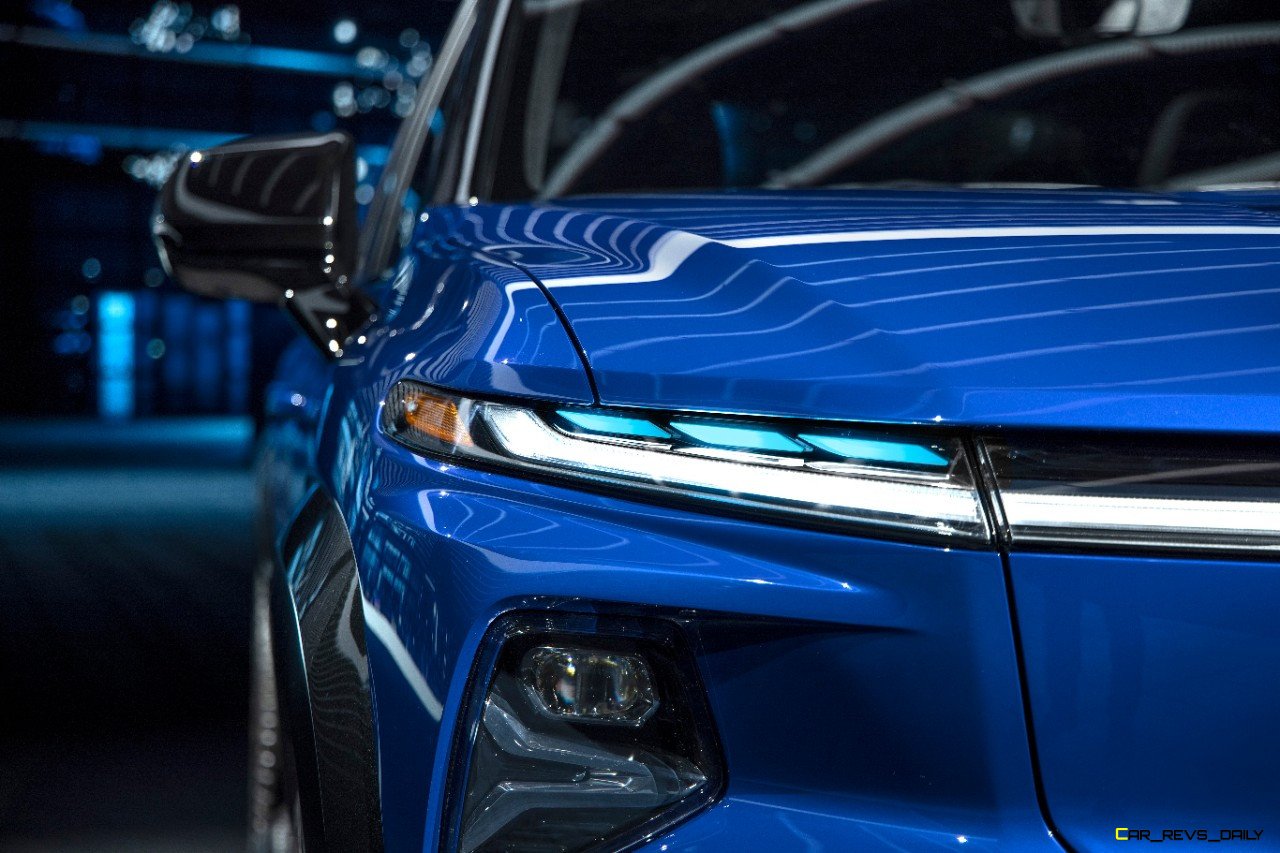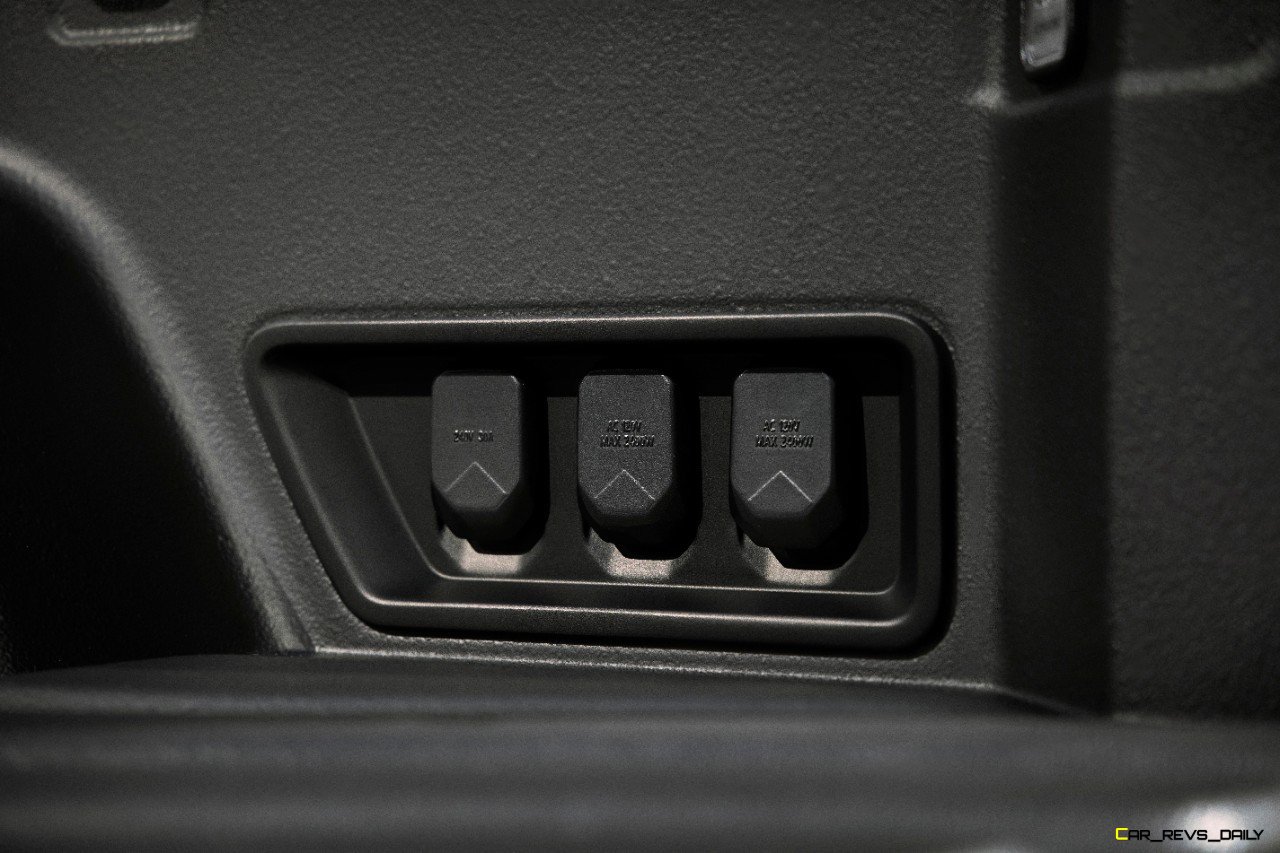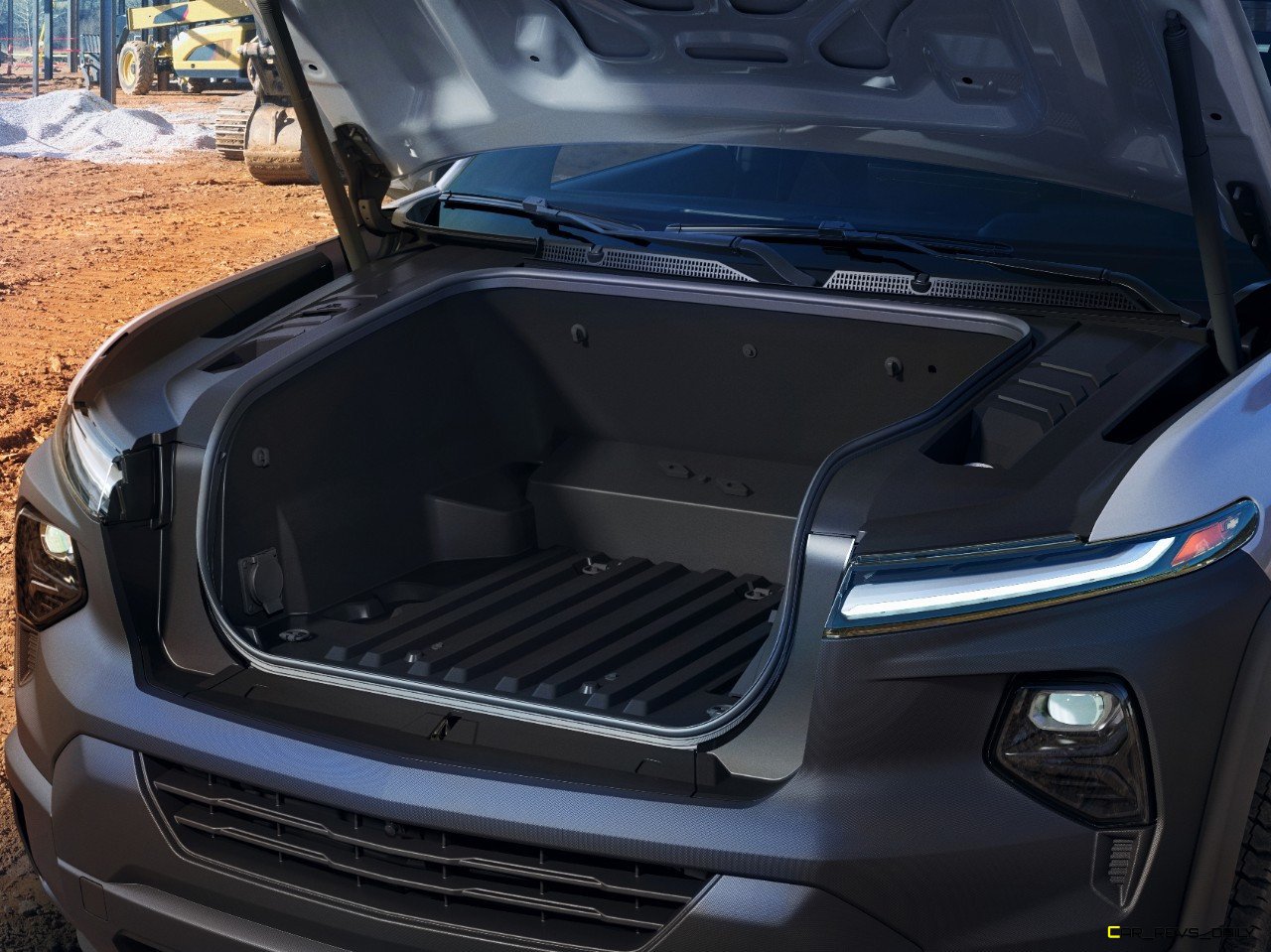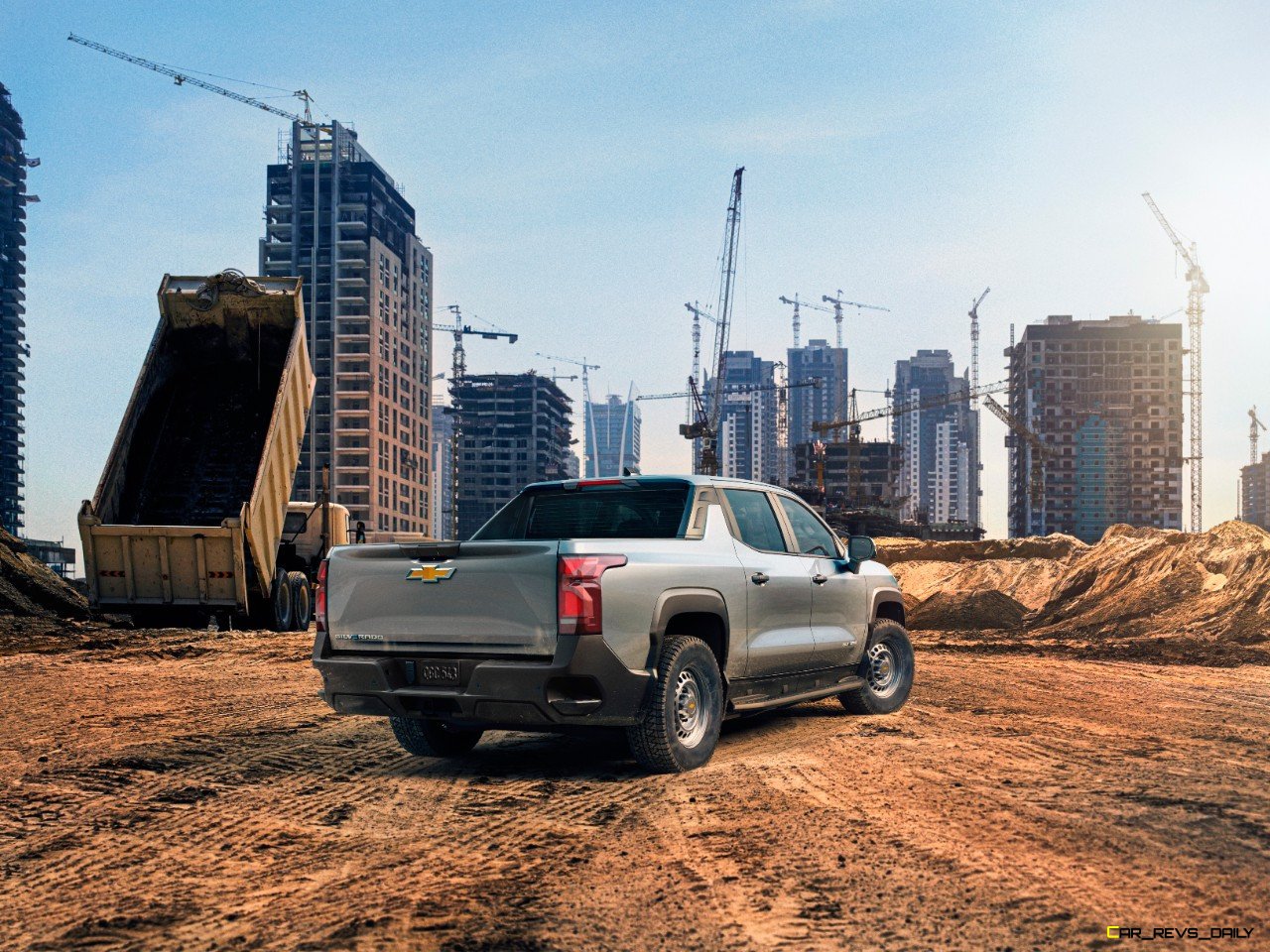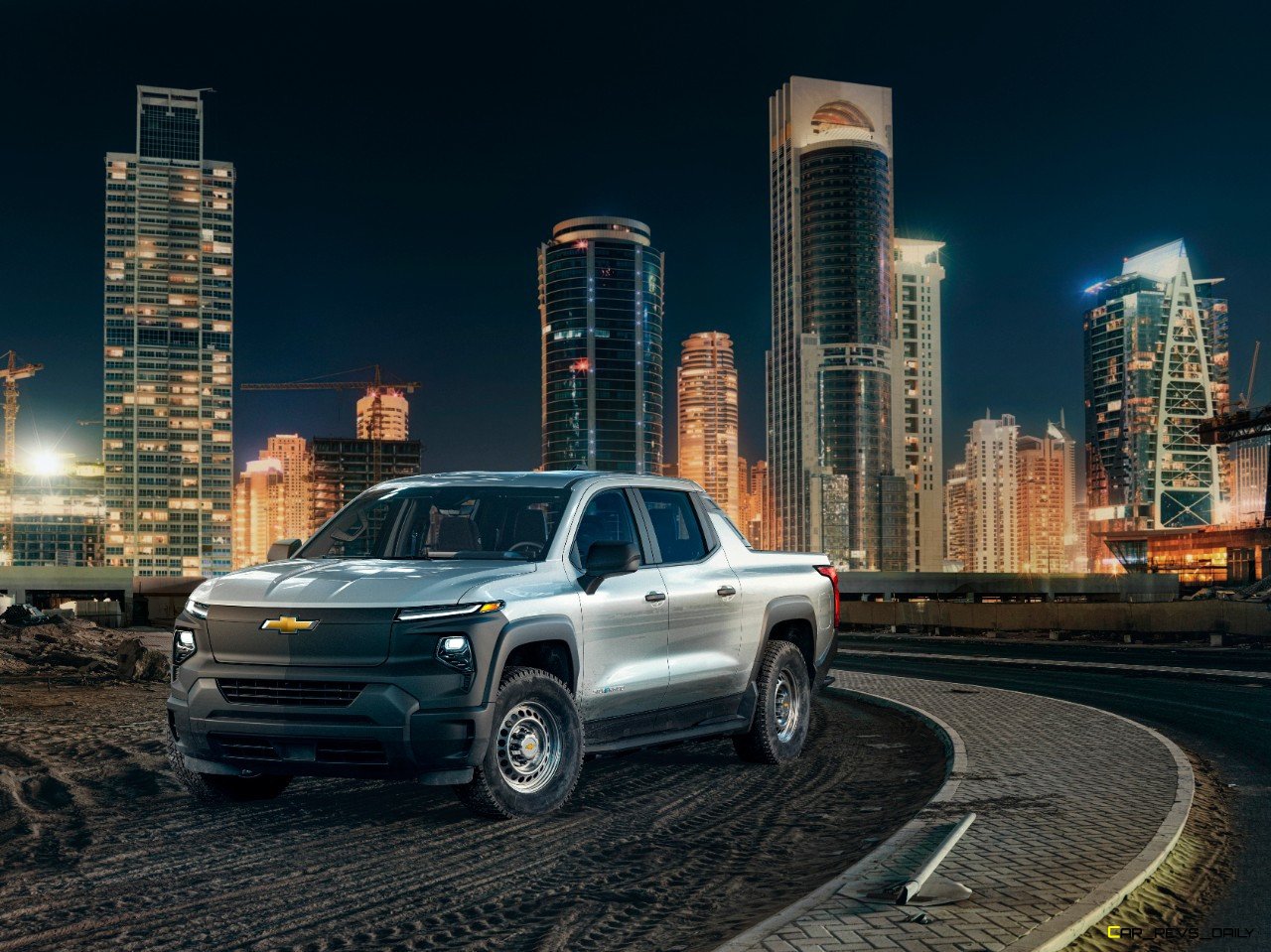The 2024 Chevrolet Silverado EV has finally arrived with General Motors unveiling the truck at a satellite event at the Fox Theater in Detroit. The Silverado is the proverbial Act Two of GM’s EV crusade and will join other Ultium powered models like the Hummer EV, Cadillac Lyriq, and the GMC Sierra Denali EV pickup.
Silverado EV A Ghost By Another Name

When GM rolled the Silverado EV on stage, we were convinced that we were seeing a ghost from our past with the exterior styling looking like a rebooted Chevrolet Avalanche. Part of this resemblance is due to the shape with the truck featuring a basic profile that’s very reminiscent of the Hummer EVs. In the case of the Silverado, the lack of an engine at the front allowed engineers to move the cowl and the bulk of the front end forward which in turn helped greatly increase interior room while enhancing forward visibility. The grille less front end has a smooth look to it, and it’s very evident that Chevrolet took aerodynamics very seriously with this design.
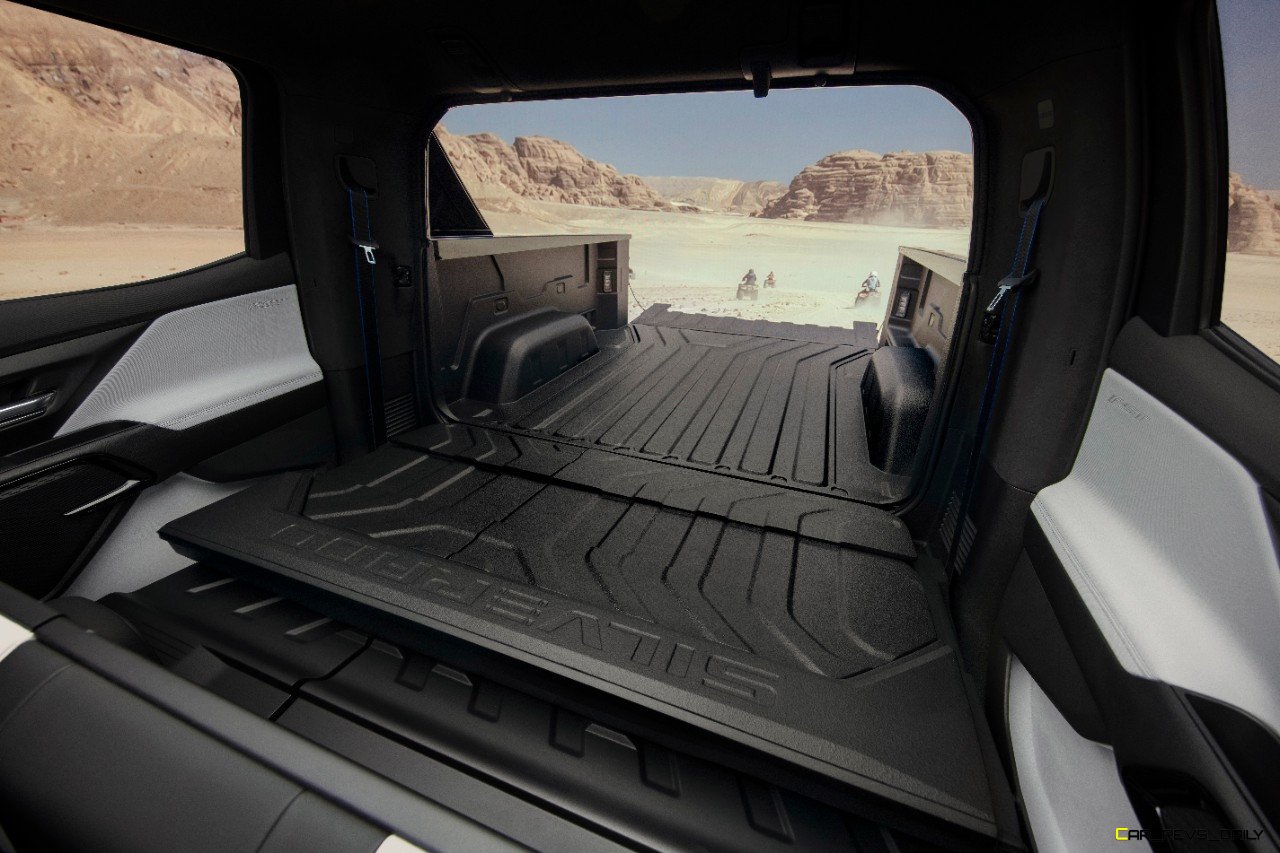
The rear of the truck has a 71-inch bed that’s a bit longer than the short bed option on the quad cab ICE-powered Silverado but Chevrolet claims that this initial disadvantage (versus rivals like the F-150 Lightning) is made up by some of the novel features that the Silverado will have to enhance functionality. That includes the midgate system which was once a staple piece of engineering on the axed Avalanche. The midgate helps enhance cargo hauling flexibility, and allows the interior to both function as a fully passenger-focused space, as well as a built-in bed extender when the seats are folded down and it’s allowed to function as a bed. IN addition to the RST model that Chevrolet used in the bulk of its images, the brand will also offer a work-focused WT version and even a hardcore off-road TrailBoss version (perhaps that trim will have a version of Crab Mode hmmm.)
Silverado EV Interior Mixes Technology And Functionality Into One Potent Package
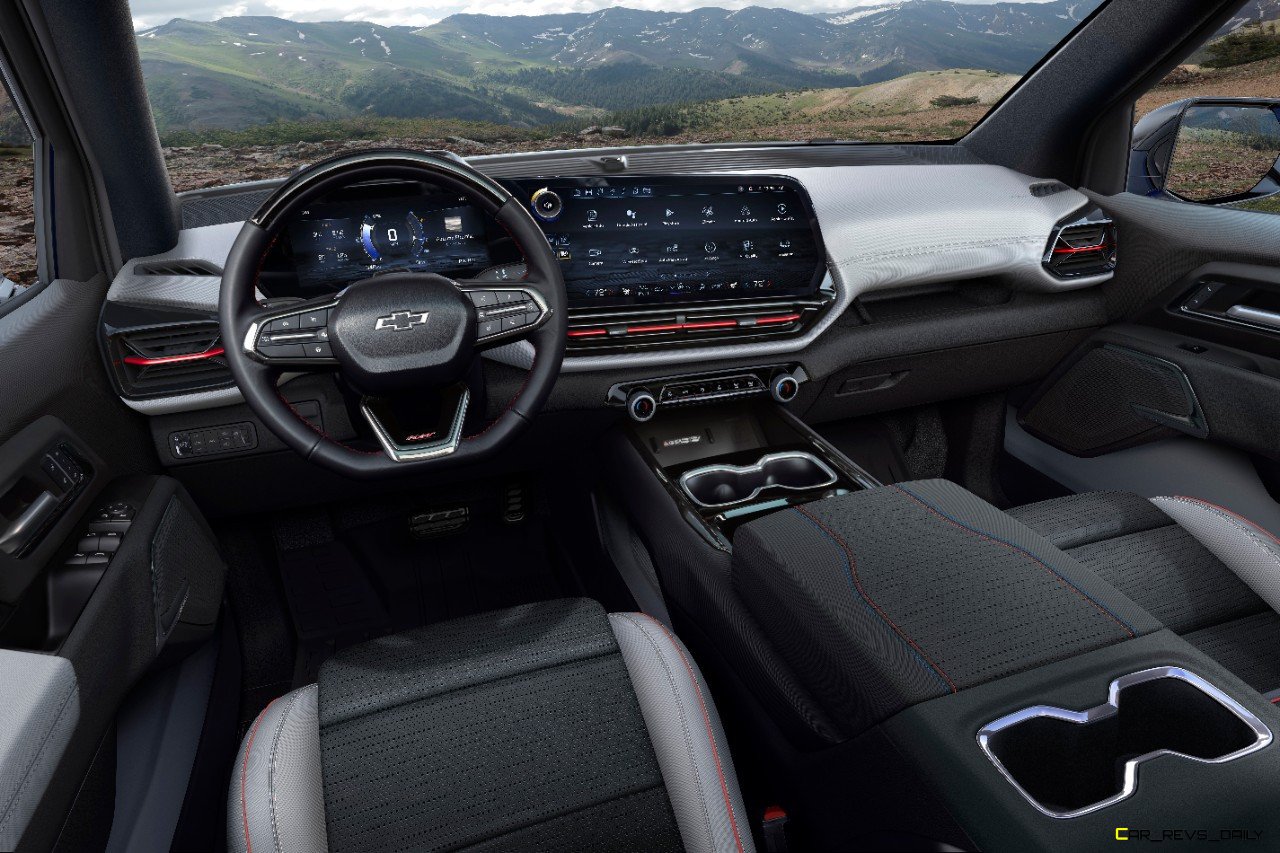
When the back half of the interior is not functioning as expanded real-estate for the bed, it helps the rest of the cabin transform into a futuristic and tech-laden space for owners to spend time in. The core design is a noticeable improvement over the ICE version and it features goodies such as a fully digital instrument cluster, a massive touchscreen, and higher-grade trim and materials. Speaking of the screen, Chevrolet will offer two different sizes with the RST featuring a 17-inch screen while the WT model uses a smaller and more traditional rectangular one.
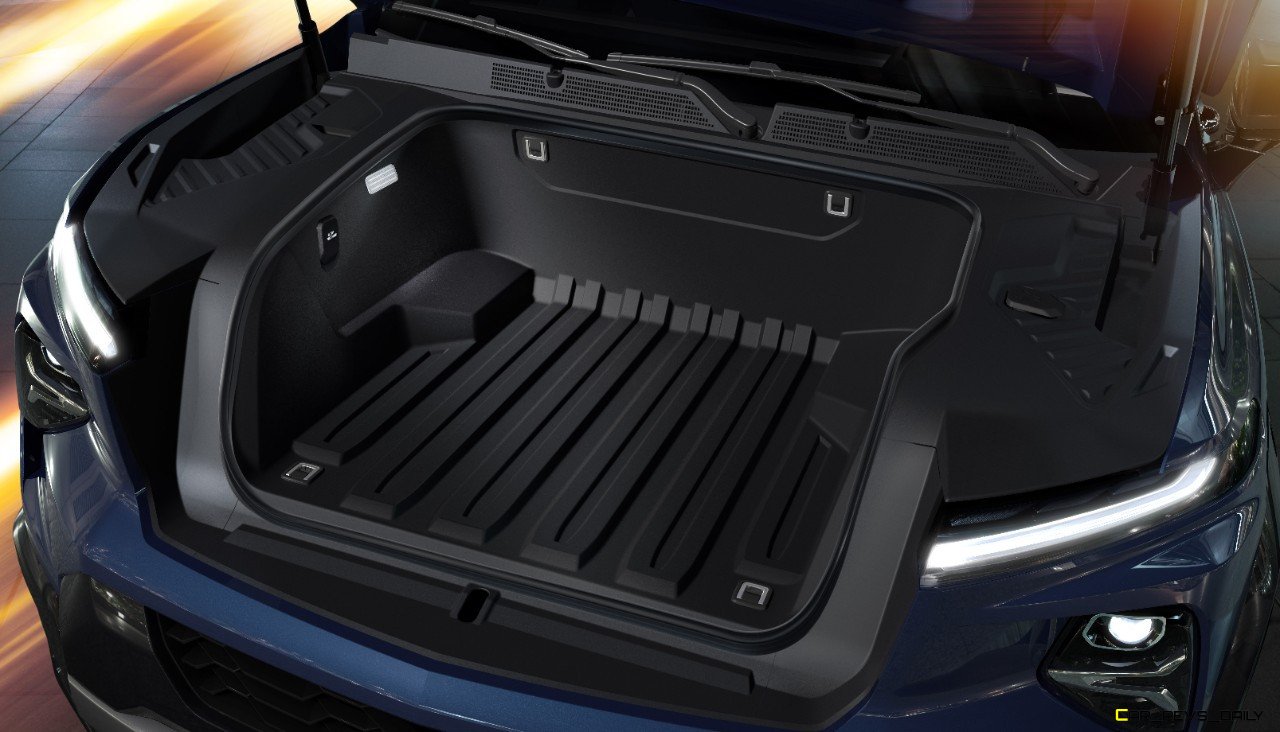
The seats have been reworked for additional support and Chevrolet is promising massive amounts of room for passengers that have a chance to take a seat and relax inside. The interior also reflects the Silverado’s price point and while it lacks some of the out of the box detail that defines the Hummer EV’s cabin, it makes up for it by having more personality and even a bit more sizzle when you add in some of the red contrast accents that are splashed in select parts of the interior.
Performance Picture Will Grow With Time
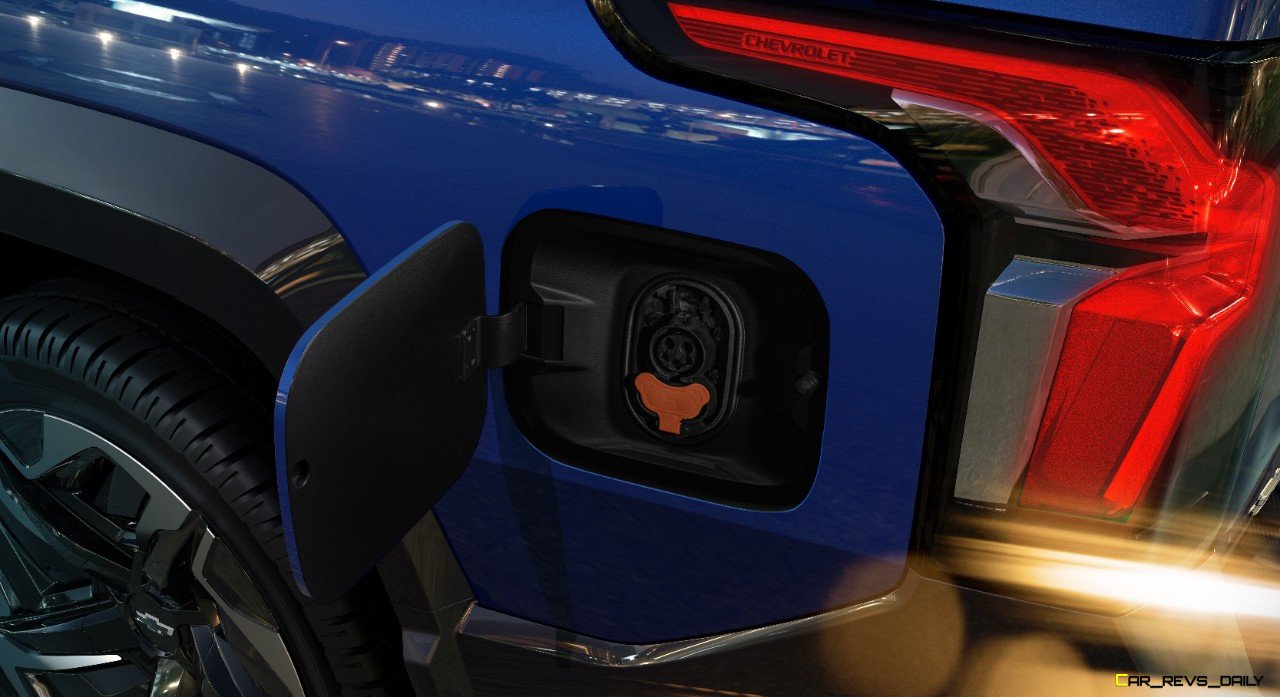
Chevrolet promises to offer a wide range of performance options, but for now the sleek skin will be home to two different Ultium configurations with WT grade SIlverados being powered by dual electric motors which allow the truck to make 510 hp and a stout 615 lb-ft of torque. After the WT models get a chance to make their way to dealerships, the fall of 2023 will see the debut of the consumer-ready RST model for traditional consumers. As the name implies, this one is the sportier version and will make more power to live up to that billing with the dual-motor arrangement here producing 664 hp and 780 lb-ft of torque when the truck is placed into “Wideo Open Watts” mode. While Chevrolet didn’t release a 0 to 60 time for the WT model, they did let it slip that the RST can make the sprint to 60 mph in under 4.5 seconds.
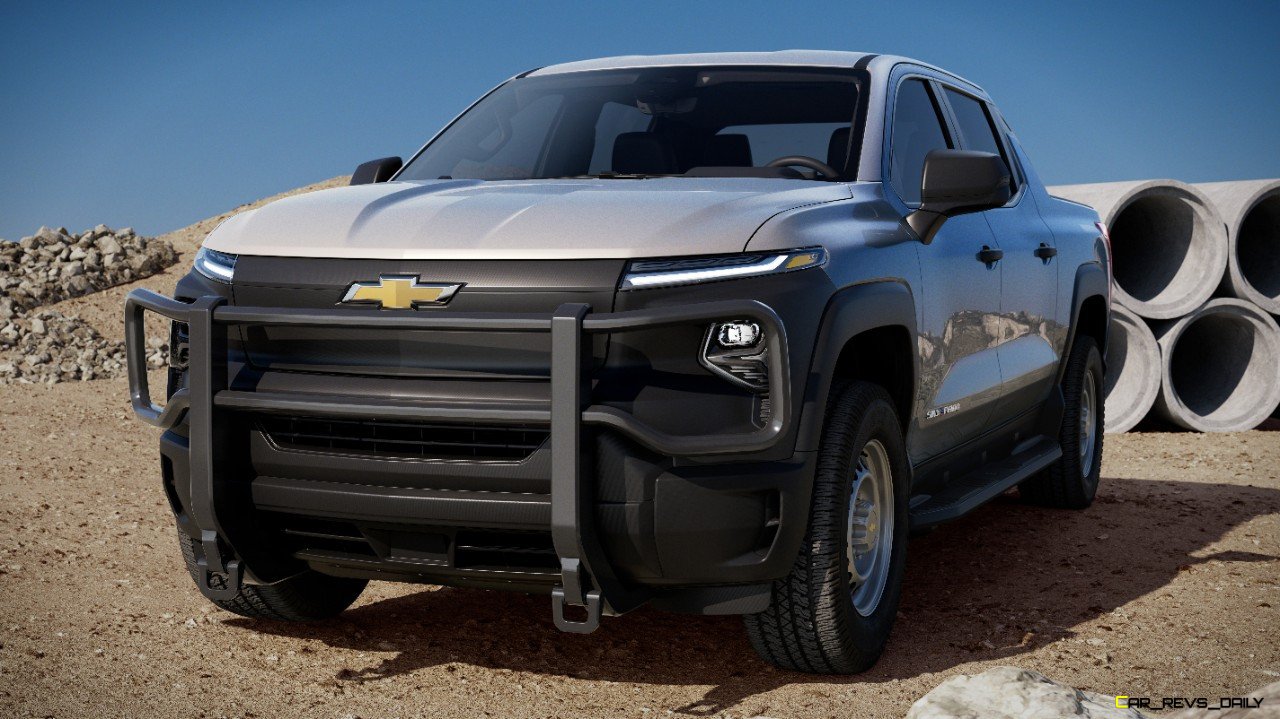
The additional power in the RST doesn’t come with a bigger battery, with both versions of the truck using the same battery pack which is slated to deliver up to 400 miles of range between charges. The battery supports a high level of charge and the Silverado has plenty of outlets that allow the Silverado to take full use of all that electricity including a 240-volt outlet for power tools. The Silverado WT can tow up to 8,000 lbs while the RST can tow up to 10,000 lbs. That latter figure is nose to nose with the F-150 Lightning, but Chevrolet will eventually offer an all-new variant that can tow up to 20,000 lbs that will top the Ford in that particular category. Things flip though when it comes to payload with the Ford’s 1,800 and 2,00 lb ratings outshining the 1,200 and 1,300 lb ratings of both Silverado EV models.
A fully independent coil-spring suspension is the base configuration but buyers can opt for an advanced adaptive air suspension. First-year RST models will have the latter choice standard but look for the air-powered suspension to be a firm optional extra on other Silverado EV models. Super Cruise will be along for the ride and in lieu of a formal start/stop button, the Silverado EV will be controlled via a phone app.
When Will We See It? And How Much?
Unlike other EV offerings that we have seen unveiled recently, the pricing situation for the Silverado EV is a bit murky. The WT model will technically be sold as a fleet model and that means GM will not have to share pricing for that particular flavor of Silverado EV. The RST model on the other hand will be loaded to the brim with equipment and that includes a base sticker of $105,000 before the destination fee is mixed in. However, the landscape will change in 2025 when Chevrolet will bring more lower-priced variants to showrooms with a consumer-grade WT tentatively slated to start at just $39,900.

Production will begin in the first half of 2023 when fleet WT models will begin rolling off the assembly line. The RST models will come next in flaa of 2023, before the remaining members of the lineup begin rolling out in 2024. Like the Hummer EV and the Lyriq, GM is taking a methodical pace here and will use lessons learned from this first wave of Silverado Evs to help prepare the second wave of consumer-focused trucks for long-term abuse and real-world scenarios.

Carl Malek has been an automotive journalist for over 10 years. First starting out as a freelance photographer before making the transition to writing during college, his work has appeared on numerous automotive forums as well as websites such as Autoshopper.com.
Carl is also a big fan of British vehicles with the bulk of his devotion going to the Morgan Motor Company as well as offerings from Lotus, MG, and Caterham. When he is not writing about automobiles, Carl enjoys spending time with his family and friends in the Metro Detroit area, as well as spending time with his adorable pets.


